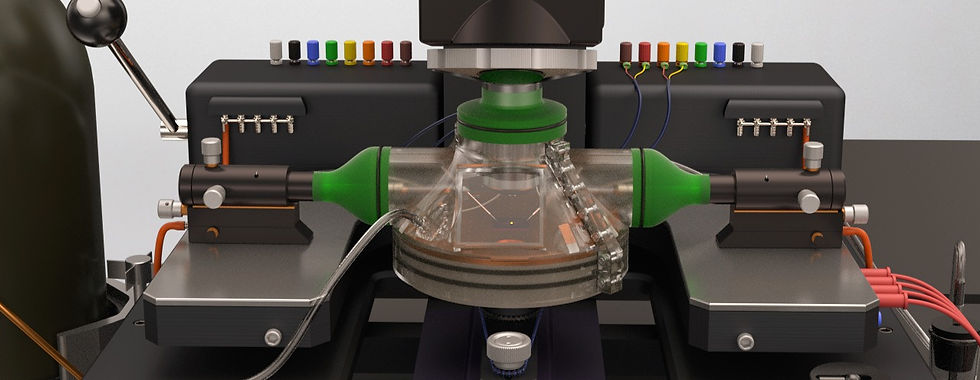How do we study air sensitive materials-II
- Boyu Zhang
- Jul 29, 2023
- 2 min read

In the previous blog, we explored the significance of studying air-sensitive samples, such as perovskites and lithium-ion battery materials, and the challenges they pose during testing. We highlighted the importance of a controlled testing environment, which led to the development of a cost-effective custom seal chamber using 3D printing. Now, we venture into another innovative solution: a transfer box for in-situ scanning electron microscopy (SEM) testing and sample preparation. This transfer box allows seamless handling of air-sensitive materials, from the glove box to the SEM, for analysis, in-situ mechanical testing, in-situ heating and electrical tests.
Unlike expensive commercial alternatives that can cost upwards of $10,000, my custom transfer box offers a cost-effective option without compromising on performance. The custom transfer box is lightweight, magnetic-free, and vacuum compatible, enabling smooth operations of Focused Ion Beam (FIB) and SEM's immersion mode for air-sensitive sample testing and preparation.
The working principle is straightforward yet efficient: with the sample securely sealed inside the transfer chamber in atmospheric conditions, the box is then installed in the SEM. As the SEM chamber is vacuum-pumped, the transfer box opens, enabling in-situ SEM testing or sample preparation. Upon the completion of testing or preparation, the transfer box reseals itself, ensuring the air-sensitive sample's safe return to the glove box. This process protects the sample from contamination and exposure to ambient air, preserving its integrity for further analysis.
My custom transfer box revolutionizes in-situ SEM testing and sample preparation for air-sensitive materials. Its cost-effectiveness, magnetic-free design, and vacuum-compatible piezo motor make it an ideal solution for researchers working with delicate samples. By simplifying the transfer process and maintaining a controlled environment, this innovation opens new avenues for material characterization and pushes the boundaries of material science.



Comments